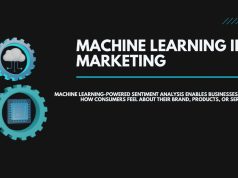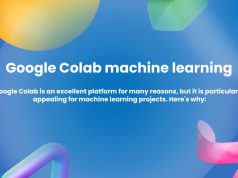Artificial intelligence (AI) and machine learning (ML) are two of the most revolutionary technological advances of our time. Yet, for many, the distinction between the two remains unclear. Are they the same thing? Is one a subset of the other? And how do they impact our rapidly evolving world?
If you’re asking these questions, you’re not alone. This blog post demystifies the key differences between AI and ML, explains how they interact, and explores their real-world applications and societal impact. By the end, you’ll know exactly what differentiates these terms and how they play a role in shaping industries and our lives.
Unpacking AI and Machine Learning
To truly understand how AI and machine learning differ, we have to first define each term clearly.
What is Artificial Intelligence
Artificial intelligence refers broadly to the simulation of human intelligence in machines. If a machine can perform tasks that typically require human intelligence, such as reasoning, problem-solving, understanding natural language, or perceiving visual data, it qualifies as AI.
AI is a vast field with the ultimate goal of creating machines that can think, learn, and adapt like humans. Within AI, there are two main subcategories to understand:
- Narrow AI
Narrow AI systems, also known as weak AI, are designed for specific tasks. Examples include voice assistants such as Alexa or Siri, recommendation systems like Netflix suggestions, or even spam email filters. They don’t possess general intelligence and operate strictly within their programmed scope.
- General AI
General AI, which is still theoretical, refers to systems capable of mimicking human cognitive functions across a broad range of tasks. If achieved, general AI could innovate autonomously and apply knowledge from one domain to another, a feat far beyond current machine capabilities.
What is Machine Learning
Machine learning is a subset of AI. It specifically involves creating algorithms that allow machines to learn from data without being explicitly programmed for specific tasks.
Rather than following static rules coded by humans, machine models improve over time. The more data they process, the better they become at identifying patterns, predicting outcomes, or solving problems.
There are three primary types of machine learning approaches to understand:
- Supervised Learning
With supervised learning, models are trained on labeled data. For example, given a dataset of emails labeled as “spam” or “not spam,” the model learns to recognize patterns that differentiate the two.
- Unsupervised Learning
Here, models work with data that isn’t labeled. They seek to identify hidden patterns or groupings within the dataset. A common example involves customer segmentation for marketing.
- Reinforcement Learning
Reinforcement learning involves training models to make decisions through rewards and penalties. This approach is common in areas like robotics and game optimization.
Relationship Between AI and Machine Learning
The relationship between AI and machine learning is simple yet significant. Think of AI as the overall goal of building intelligent systems, while machine learning acts as one of the techniques to achieve that goal.
Other techniques under the AI umbrella include natural language processing (NLP), robotics, computer vision, and expert systems. Machine learning, however, is one of the most pivotal methods due to its ability to handle immense datasets, adapt over time, and automate complex processes.
Analogy to Simplify AI and ML
If AI is the car, machine learning is the engine that powers it. Without the engine, the car can’t move. Similarly, AI systems often rely on machine learning models to gain intelligence and execute tasks effectively.
Understanding Human Touch in Qualitative Research
Real World Applications
AI and machine learning may seem abstract without context, but their applications are already embedded in our everyday lives and industries.
AI Applications
- Voice Assistants: Siri, Google Assistant, and Alexa use AI to understand natural language commands and respond appropriately.
- Autonomous Vehicles: AI enables cars like those by Tesla to interpret traffic patterns, recognize road hazards, and follow navigation routes.
- Healthcare Diagnostics: AI aids doctors in diagnosing diseases like cancer by analyzing medical imaging data.
Machine Learning Applications
- Spam Filters: Emails systems like Gmail use machine learning to filter out spam effectively.
- Personalized Recommendations: Platforms like YouTube, Spotify, and Amazon depend on machine learning to tailor recommendations based on user behavior.
- Fraud Detection: Banks utilize machine learning to detect unusual transaction patterns and prevent fraud.
Key Differences to Remember
Still wondering how AI and machine learning differ? Here’s a quick comparison to help clarify things for good.
|
Feature |
Artificial Intelligence (AI) |
Machine Learning (ML) |
|---|---|---|
|
Definition |
Simulates human intelligence |
Allows systems to learn from data |
|
Scope |
Broader; includes multiple techniques |
Subset of AI |
|
Objective |
Perform human-like tasks |
Automate learning and pattern recognition |
|
Examples |
Chatbots, robotics, autonomous cars |
Fraud detection, product recommendations |
Why the Distinction Matters
Understanding the difference between AI and machine learning is not just about grasping definitions; it’s about appreciating how these technologies can drive transformational change in industries. Making the distinction allows businesses to better strategize where and how they can implement these systems to solve real problems.
For example:
- A company wanting to automate customer support may initially adopt a narrow AI-driven chatbot.
- However, by incorporating machine learning into customer interactions, the chatbot could improve its responses over time based on real data from user interactions.
What Lies Ahead for AI and Machine Learning
Both AI and machine learning are progressing at breakneck speed. The future promises advancements that will blur the line between human and machine capabilities. From self-learning robots that can perform complex actions to AI systems that understand context better than humans, we’re moving toward a future where these technologies redefine how we live and work.
However, challenges related to ethics, data privacy, and proper regulation also lie ahead. How society handles these issues will determine whether AI and machine learning are used responsibly or in ways that create unintended consequences.
Taking Action in the AI Era
Now that you have a clearer grasp of AI vs machine learning, what’s next? For businesses and professionals, the key lies in leveraging the right tools at the right time.
If you’re a business professional eager to explore how AI and machine learning can solve your challenges, start by identifying areas in your operations that could benefit from automation, data analysis, or improved customer interactions. The opportunities are immense, and staying ahead of the curve starts with taking the first step today.









